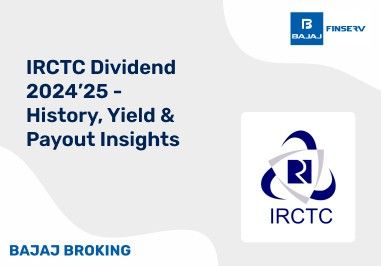The old vs new tax regime debate has become more relevant after Budget 2025 restructured tax slabs and exemptions. The new tax regime now offers zero tax up to ₹12.75 lakh for salaried individuals, reducing tax complexity. In contrast, the old tax regime retains popular deductions like 80C and HRA, benefiting those with significant tax-saving investments.
Choosing between the old regime vs new regime depends on your financial strategy—whether you prefer structured deductions or a straightforward, exemption-free system. While the new tax regime suits taxpayers with minimal claims, those leveraging deductions may still find the old tax regime more tax-efficient.
Old vs New Tax Regime: Which Option is Better Post Budget 2025?
The old vs new tax regime debate has gained momentum following the Union Budget 2025, which introduced major tax reliefs under the new tax regime. With a zero-tax threshold extending up to ₹12.75 lakh for salaried individuals, many middle-income earners may find the new structure more beneficial.
However, the old tax regime continues to provide tax-saving opportunities through deductions such as 80C (investments), 80D (medical insurance), and HRA (house rent allowance). For taxpayers who maximize these exemptions, the traditional system might still be preferable.
Ultimately, the old regime vs new regime decision depends on individual tax planning. Those seeking simplicity may prefer the new tax regime, while deduction-heavy taxpayers might benefit more from the old tax regime.
Major Announcements in Union Budget 2025
Higher Zero-Tax Threshold – The new tax regime now allows salaried individuals to enjoy zero tax up to ₹12.75 lakh, including a ₹75,000 standard deduction.
Revised Income Tax Slabs – The new tax regime introduces seven slabs, with tax rates ranging from 0% to 30%, ensuring lower rates for middle-income earners.
No Changes to the Old Regime – The old tax regime retains its existing slabs, deductions, and exemptions, providing continuity for taxpayers relying on tax-saving investments.
Minimal Deductions Under the New Regime – Common exemptions such as HRA, LTA, and Section 80C are not available, except for the ₹75,000 standard deduction.
Simplified Compliance – The new tax regime reduces paperwork, eliminating the need for investment proofs and exemption claims.
Greater Benefits for High-Income Earners – Taxpayers earning above ₹24 lakh may see lower tax liability under the new tax regime, depending on their deductions in the old tax regime.
New Tax Regime - Latest Income Tax Slabs for FY 2025-26
The Union Budget 2025 has introduced revised income tax slabs under the new tax regime for the fiscal year 2025-26, effective from April 1, 2025. These changes aim to provide tax relief and simplify the tax structure for individual taxpayers.
Annual Income (₹)
| Tax Rate
|
Up to 4,00,000
| Nil
|
4,00,001 to 8,00,000
| 5%
|
8,00,001 to 12,00,000
| 10%
|
12,00,001 to 16,00,000
| 15%
|
16,00,001 to 20,00,000
| 20%
|
20,00,001 to 24,00,000
| 25%
|
Above 24,00,000
| 30%
|
Additionally, salaried individuals are entitled to a standard deduction of ₹75,000, effectively increasing the zero-tax threshold to ₹12,75,000. These adjustments are designed to enhance disposable income and stimulate economic growth.
Old Tax Regime - Applicable Income Tax Slabs for FY 2025-26
The old tax regime retains its traditional tax slabs for FY 2025-26, allowing taxpayers to claim exemptions and deductions such as 80C, 80D, HRA, and LTA. These slabs remain unchanged, providing continuity for those who maximize tax-saving investments.
Annual Income (₹)
| Tax Rate
|
Up to 2,50,000
| Nil
|
2,50,001 to 5,00,000
| 5%
|
5,00,001 to 10,00,000
| 20%
|
Above 10,00,000
| 30%
|
Taxpayers opting for the old tax regime can reduce taxable income through various deductions, making it a viable choice for individuals with substantial exemptions. Unlike the new tax regime, which simplifies tax filing, the old tax regime remains beneficial for those who strategically invest in tax-saving instruments.
Old vs New Tax Regime: Side-by-Side Comparison
The table below outlines the primary differences between the old tax regime and the new tax regime - Budget 2025, helping taxpayers determine the best choice based on their income and deductions.
Criteria
| Old Tax Regime
| New Tax Regime (Budget 2025)
|
Exemption Threshold
| ₹2.5 lakh
| ₹12 lakh (₹12.75 lakh for salaried individuals)
|
Tax Rate Structure
| Higher rates on lower income slabs
| Gradual increases across broader slabs
|
Deductions & Exemptions
| Allows 80C, 80D, HRA, LTA, home loan benefits
| Limited to ₹75,000 standard deduction
|
Paperwork & Compliance
| Requires proof for deductions and exemptions
| Minimal documentation needed
|
Best Suited For
| Individuals maximizing tax-saving investments
| Taxpayers preferring ease and lower initial tax
|
Taxpayers must assess their Old vs New Tax Regime benefits annually to optimize their tax savings.
Old Tax Regime: Structure, Perks, and Deductions
The old tax regime continues to be a preferred option for taxpayers who maximize deductions and exemptions. It retains the traditional tax slab structure and provides multiple benefits through tax-saving investments.
Structure of the Old Tax Regime
Fixed Tax Slabs – Tax rates remain unchanged, with 5%, 20%, and 30% applied at different income levels.
Lower Basic Exemption Limit – The threshold for tax-free income remains ₹2.5 lakh, significantly lower than the new tax regime.
Higher Tax on Mid-Income Earners – Individuals earning between ₹10-20 lakh may face higher tax liability if they do not maximize deductions.
Key Perks of the Old Tax Regime
Deductions for Investments – Taxpayers can claim savings under Section 80C (PPF, ELSS, FD, etc.), reducing taxable income.
House Rent Allowance (HRA) Exemption – Salaried individuals paying rent can benefit from HRA deductions.
Home Loan Interest Deduction – Up to ₹2 lakh can be deducted on interest paid for self-occupied properties under Section 24(b).
Health Insurance Deduction – Section 80D allows tax benefits for premiums paid on health insurance for self and family.
Leave Travel Allowance (LTA) – Eligible employees can claim tax-free reimbursements for domestic travel expenses.
Who Benefits Most from the Old Tax Regime?
Taxpayers with High Investment Contributions – Those utilizing 80C, 80D, and home loan deductions effectively reduce taxable income.
Salaried Individuals with HRA – Employees living in rental housing gain additional tax relief.
Individuals with Large Medical Expenses – Health insurance premium deductions can significantly lower taxable income.
The old tax regime remains advantageous for taxpayers who actively use deductions to reduce their overall tax burden.
New Tax Regime - Budget 2025: Key Updates
Higher Zero-Tax Threshold – Salaried individuals earning up to ₹12.75 lakh pay no tax, including a ₹75,000 standard deduction.
Revised Tax Slabs – The new tax regime now features seven income slabs, with rates gradually increasing from 0% to 30%.
No Major Deductions – Exemptions like HRA, LTA, and 80C are removed, apart from the standard deduction for salaried taxpayers.
Simplified Tax Filing – Fewer deductions mean reduced paperwork and an easier tax return process.
Lower Tax Rates for Middle-Income Earners – Individuals earning between ₹8–20 lakh benefit from lower tax rates under the new tax regime.
Flexibility in Regime Selection – Salaried individuals can choose between the old vs new tax regime each financial year.
Potential Benefits for High Earners – Taxpayers earning above ₹24 lakh may pay lower taxes if their deductions under the old tax regime are minimal.
Old Regime vs New Regime: Income Tax Calculations with Examples
Example 1: Income = ₹13 Lakh (Salaried)
New Tax Regime: After applying the ₹75,000 standard deduction, taxable income reduces to ₹12.25 lakh. With the revised tax slabs, tax liability remains minimal.
Old Tax Regime: If deductions (HRA, 80C, 80D) total ₹2–3 lakh, taxable income reduces significantly, potentially matching or beating the new tax regime.
Example 2: Income = ₹20 Lakh
New Tax Regime: Tax applies at 20% for the ₹16–20 lakh bracket, and only the ₹75,000 standard deduction is available.
Old Tax Regime: With substantial exemptions (HRA, 80C, 80D, home loan interest), taxable income can be reduced to a lower bracket, offering savings.
Example 3: Income = ₹14 Lakh
New Tax Regime: Taxable income remains ₹13.25 lakh after the standard deduction.
Old Tax Regime: If deductions total ₹4–5 lakh, taxable income drops significantly, making it more tax-efficient in some cases.
Example 4: Income = ₹18–22 Lakh
New Tax Regime: With fewer exemptions, taxable income remains high but benefits from lower tax rates.
Old Tax Regime: Maximizing deductions can push taxable income into a lower bracket, potentially reducing overall tax liability.
Example 5: Income Above ₹24 Lakh
New Tax Regime: Effective for those with minimal deductions, as lower rates apply across slabs.
Old Tax Regime: If total deductions exceed ₹8 lakh, tax savings may be higher under this system.
Key Takeaway
The best choice between the old vs new tax regime depends on deductions. Taxpayers should compare both options before filing returns.
Case Study: Earning Above ₹24 Lakh – Old Tax Regime vs New Tax Regime
Scenario: Gross Salary = ₹35,00,000
A taxpayer earning ₹35 lakh must evaluate both regimes based on available deductions and applicable tax rates.
Old Tax Regime Calculation
Gross Income: ₹35,00,000
Deductions & Exemptions: (Varies based on taxpayer’s investments)
Section 80C (PPF, ELSS, etc.): ₹1,50,000
Section 80D (Health Insurance): ₹50,000
HRA & LTA (Assumed): ₹2,75,000
Interest on Home Loan: ₹2,50,000
Other Deductions: ₹2,00,000
Total Deductions: ₹9,25,000
Taxable Income After Deductions: ₹25,75,000
Tax Payable (After Slab Application): Higher due to 30% tax on most income.
New Tax Regime Calculation
Gross Income: ₹35,00,000
Standard Deduction: ₹75,000
Taxable Income: ₹34,25,000
Tax Slabs Applied: Gradual increases, with a 30% tax on income above ₹24 lakh.
Final Tax Payable: Potentially lower than in the Old Tax Regime, depending on total deductions.
Which Regime is More Beneficial?
If deductions are below ₹8 lakh, the new tax regime generally leads to lower tax liability.
If deductions exceed ₹8 lakh, the old tax regime can still offer better savings, provided the taxpayer utilizes all exemptions.
For high-income earners with minimal exemptions, the new tax regime is typically the more tax-efficient option.
Case Study: Earning Below ₹24 Lakh – Comparing New and Old Tax Regimes
Scenario 1: Gross Salary = ₹14 Lakh (Salaried)
New Tax Regime Calculation
Gross Income: ₹14,00,000
Standard Deduction: ₹75,000
Taxable Income: ₹13,25,000
Applicable Tax Slabs: Lower rates apply, leading to reduced tax liability.
Final Tax Payable: Moderate, as only the standard deduction is available.
Old Tax Regime Calculation
Gross Income: ₹14,00,000
Deductions & Exemptions:
Section 80C (PPF, ELSS, etc.): ₹1,50,000
Section 80D (Health Insurance): ₹50,000
HRA & LTA (Assumed): ₹2,55,000
Total Deductions: ₹4,55,000
Taxable Income After Deductions: ₹9,45,000
Final Tax Payable: Potentially lower if all deductions are utilized.
Scenario 2: Gross Salary = ₹18 Lakh
New Tax Regime Calculation
Gross Income: ₹18,00,000
Standard Deduction: ₹75,000
Taxable Income: ₹17,25,000
Tax Slabs Applied: Moderate tax liability due to reduced exemption options.
Old Tax Regime Calculation
Gross Income: ₹18,00,000
Deductions & Exemptions:
Section 80C: ₹1,50,000
Section 80D: ₹50,000
HRA & LTA: ₹3,00,000
Total Deductions: ₹5,00,000
Taxable Income After Deductions: ₹13,00,000
Final Tax Payable: Potentially lower than the new tax regime if deductions are maximized.
Scenario 3: Gross Salary = ₹22 Lakh
New Tax Regime Calculation
- Gross Income: ₹22,00,000
Standard Deduction: ₹75,000
Taxable Income: ₹21,25,000
Tax Payable: Higher, due to the absence of investment-related deductions.
Old Tax Regime Calculation
Gross Income: ₹22,00,000
Deductions & Exemptions:
Section 80C: ₹1,50,000
Section 80D: ₹50,000
HRA & LTA: ₹3,50,000
Home Loan Interest: ₹2,00,000
Total Deductions: ₹7,50,000
Taxable Income After Deductions: ₹14,50,000
Final Tax Payable: Lower, given the extensive deductions.
Which Regime is More Beneficial?
For incomes up to ₹12.75 lakh, the new tax regime is typically better as it results in zero or minimal tax liability.
For incomes between ₹12-24 lakh, the old tax regime is usually more advantageous if total deductions exceed ₹5 lakh.
For individuals with fewer deductions, the new tax regime offers a simplified structure with lower upfront tax rates.
Summary of Key Differences: Old Regime vs New Regime
Basic Exemption Limit: ₹2.5 lakh under the old tax regime, ₹12 lakh (₹12.75 lakh for salaried) under the new tax regime.
Tax Slabs: The old tax regime follows a 5%, 20%, and 30% structure, while the New Tax Regime has seven slabs, ranging from 0% to 30%.
Deductions & Exemptions: The old tax regime allows exemptions like HRA, LTA, 80C, and 80D, whereas the new tax regime only permits a ₹75,000 standard deduction.
Compliance Requirement: The old tax regime requires investment proofs and documentation, while the new tax regime simplifies tax filing with minimal paperwork.
Best for Taxpayers with Deductions: The old tax regime benefits those with significant tax-saving investments.
Best for Simplified Taxation: The new tax regime suits those preferring straightforward slab rates and lower tax burdens without deductions.
Annual Selection Flexibility: Salaried individuals can switch between the old vs new tax regime each financial year based on tax benefits.
Crucial Factors for Choosing Between Old and New Tax Regimes
Income Level – Lower and middle-income taxpayers may benefit from the new tax regime, while higher earners with deductions might prefer the old tax regime.
Deductions & Exemptions – If you claim HRA, 80C, 80D, home loan interest, etc., the old tax regime is often more advantageous.
Zero-Tax Threshold – Salaried individuals earning up to ₹12.75 lakh can benefit from zero tax under the new tax regime.
Simplicity vs. Tax Savings – The new tax regime offers easier compliance, while the old tax regime requires documentation but may reduce taxable income.
Investment Strategy – If you actively invest in tax-saving instruments, the old tax regime might yield greater benefits.
Annual Tax Planning – Salaried individuals can reassess the old vs new tax regime each year to optimize savings.
Old Tax Regime or New Tax Regime – Which One Should You Choose?
Choosing between the old vs new tax regime depends on your financial situation, deductions, and tax-saving preferences. While the new tax regime simplifies taxation, the old tax regime remains beneficial for those maximizing exemptions.
For Salaried Individuals
Choose the new tax regime if your income is up to ₹12.75 lakh (zero tax).
The old tax regime is better if you claim HRA, LTA, and 80C deductions.
For Self-Employed & Business Owners
For Low & Middle-Income Earners
For High-Income Earners (Above ₹24 Lakh)
The new tax regime may be better if deductions are below ₹8 lakh.
If claiming 80C, home loan interest, and HRA, the old tax regime can reduce taxes.
For Those Preferring Simplicity
Final Thoughts
Deciding between the old vs new tax regime depends on your income structure, deductions, and financial priorities. The new tax regime simplifies tax filing with broader slabs and a higher exemption threshold, making it ideal for those with minimal exemptions. Meanwhile, the old tax regime remains beneficial for individuals maximizing deductions like HRA, 80C, and 80D.
Salaried taxpayers earning up to ₹12.75 lakh benefit from zero tax under the new tax regime, while higher earners with substantial exemptions may save more under the old tax regime. Assessing both options annually ensures you optimize tax savings and minimize liability.
Do you have a trading account app or demat account app?
You can open an account with Bajaj Broking in minutes.
Download the Bajaj Broking app now from Play Store or App Store.
Disclaimer: Investments in the securities market are subject to market risk, read all related documents carefully before investing.
This content is for educational purposes only. Securities quoted are exemplary and not recommendatory.
For All Disclaimers Click Here: https://www.bajajbroking.in/disclaimer













